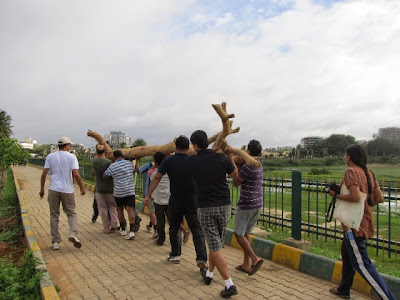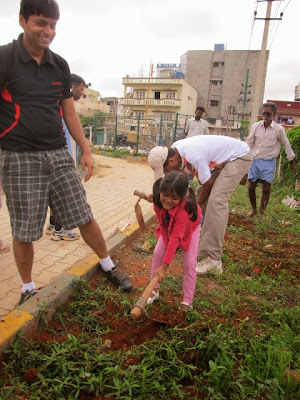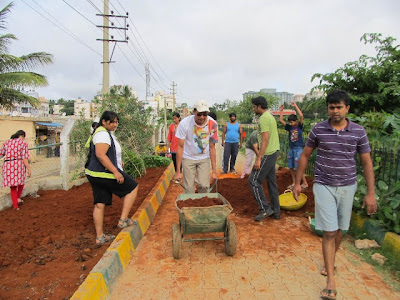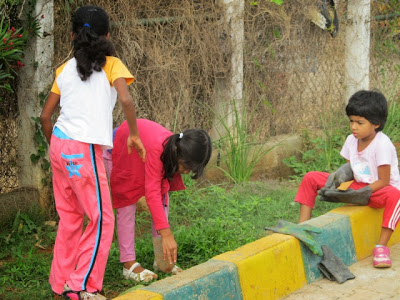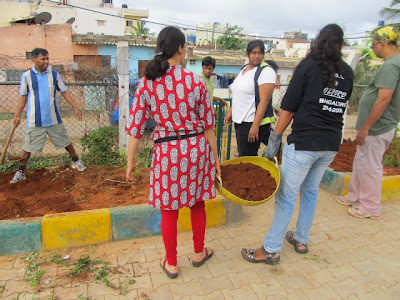While this set of volunteers was busy with the dead tree, others were busy sprucing up the space on either side of the new picket gate. By 9 a.m., the ground was cleared of plastic to the extent possible and rich red soil spread. Gardener Kumar began putting in stakes and by evening he will cordon the area. Next weekend, we’ll complete planting here and move on to the next step towards transforming our neighbourhood, people’s lake. We are looking to plant a flower border with three plant species in different colours and heights – Rasna (Alpinia calcarata Rox), a medicinal herb which grows up to 1.8 to 2.5 m in height, Tincture plant (Collinsia tinctoria), a low level plant in gorgeous shades of purple and multi-coloured Lantana.
Similar Story
Opinion: Why climate action must recognise and include India’s informal workers
The ongoing COP29 conference in Baku, is a pivotal moment in climate action, focusing on global cooperation to limit warming to 1.5°C. Key priorities include mobilising financial resources for developing countries to submit ambitious climate plans (NDCs) by 2025 and continuing support through the Fund for Loss and Damage (FRLD) established at COP28. COP29 also aims to strengthen adaptation efforts by setting finance-backed targets for the Global Goal on Adaptation. While COP29 primarily focuses on international climate initiatives, India must address pressing domestic issues. One key group often overlooked is informal workers in Indian cities. Over 80% of India’s urban…


